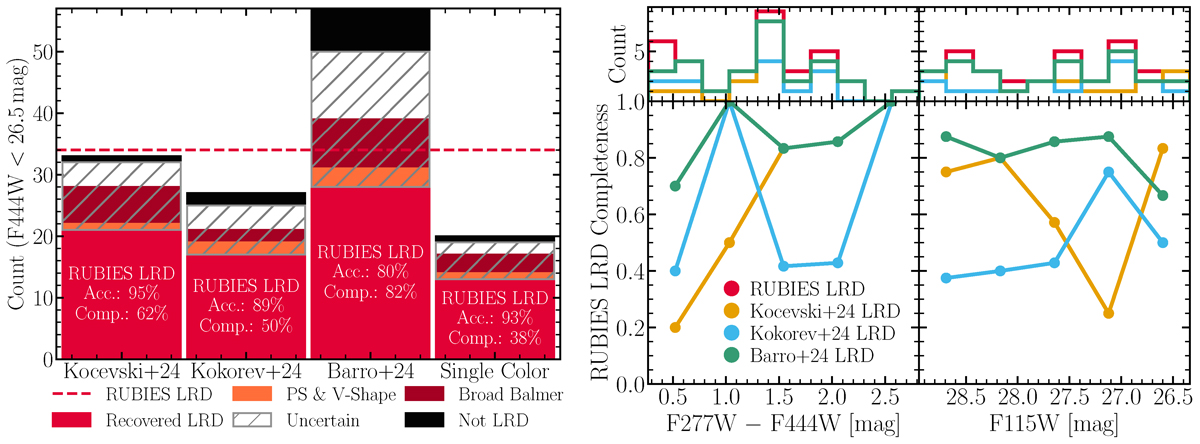Fig. 9.

Download original image
Breakdown of photometric LRD selection methods at F444W < 26.5. The left panel shows how photometric LRDs are distributed among spectroscopically classified categories: spectroscopic LRDs (red), rest-optical point sources and v-shaped galaxies (orange), broad Balmer line sources (dark red), non-LRDs (black), and galaxies with unreliable feature measurements (gray hatched). Overall, photometric LRD selections are accurate but incomplete relative to spectroscopic identifications. The right panel investigates the completeness of the RUBIES photometric LRDs as a function of F277W−F444W color (left) and F115W magnitude (right). The top plots show histograms of RUBIES LRDs (red), matched LRDs from Kocevski et al. (2025, orange), and Kokorev et al. (2024, blue). The bottom plots display the binned completeness of each selection method relative to the RUBIES sample. We find that Kocevski et al. 2025 is incomplete at bluer colors, while Kokorev et al. 2024 is primarily incomplete at fainter rest-UV magnitudes.
Current usage metrics show cumulative count of Article Views (full-text article views including HTML views, PDF and ePub downloads, according to the available data) and Abstracts Views on Vision4Press platform.
Data correspond to usage on the plateform after 2015. The current usage metrics is available 48-96 hours after online publication and is updated daily on week days.
Initial download of the metrics may take a while.


